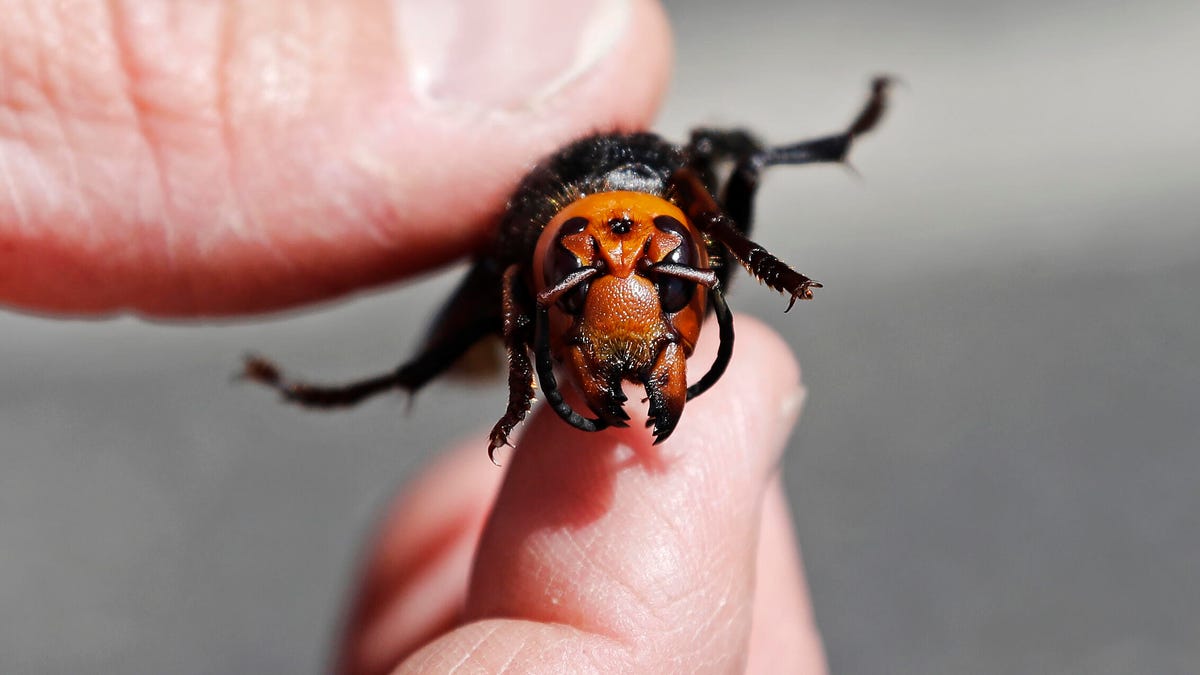Murder hornets are back and that could be bad news for bees
Native to Asia, these fearsome insects have been sighted a few times in Canada and the US over the last two years.

An Asian giant hornet, or Murder Hornet.
It's a bad time to be a honeybee in America. A live Asian giant hornet -- better known as a murder hornet -- was found on Aug. 11 in Washington state, the first sighting of a live specimen this year. The appearance of murder hornets has been feared by scientists and beekeepers, who worry a wave could devastate local honeybee populations.
Murder hornets earn their moniker through their savage feeding habits. They're known for decapitating victims, eating their young and then taking those decapitated heads back to feed its offspring. It has a stinger that can pierce beekeeper suits and, in very rare cases, even kill humans: between 30 and 50 people are killed each year in Japan by the hornet, according to the US Department of Agriculture.
In addition to Japan, the murder hornet is also common in China and Russia. Entomologists were alarmed to find a murder hornet nest in British Columbia, Canada in September 2019, followed by a murder hornet specimen in Washington three months later in December of 2019. A few more sightings of dead Murder Hornets or their nests followed in 2020, but last week's discovery marks the first live sighting of 2021.
A Murder Hornet spotted on Aug. 11.
The murder hornet was found while attacking a paper wasp nest, according to Washington's entomologist, Sven Spichige. The Department of Agriculture's press release noted that a small group of murder hornets can kill an entire honey bee hive within hours.
"Most likely, one or two fertile queen hornets entered Canada via shipping packaging and created the colony that was discovered in 2019," wrote Akita Kawahara, associate professor and curator of insects at the Florida Museum of Natural History last May in The Conversation. "It's easy for invasive species to travel this way."
The question facing experts now is whether the hornets can "establish" themselves, meaning the existing creatures can reproduce enough to create a self-sustaining population.
"This is our window to keep it from establishing," Washington state entomologist Chris Looney told the New York Times last year after a sighting. "If we can't do it in the next couple of years, it probably can't be done."
That'd be bad news for the honeybees.
James Crall, assistant professor of entymology at the University of Wisconsin, told the Harvard Gazette last year: "If they do become established, then the honeybees will experience strong evolutionary pressures over the next years as they adapt to this new ecological interaction."
He pointed to examples of honeybees with thicker exoskeletons or keen senses of smell, but also to Japanese honeybees which have evolved an attack mechanism. When murder hornets attack honeybees in Japan, the bees cluster around hornets and flutter their wings, creating heat at the center of the cluster -- which effectively fries the hornet to death.

